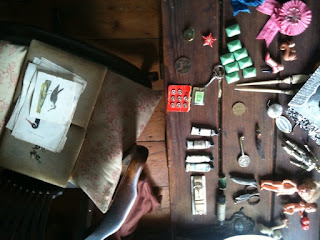 |
In the right light, at the right time, everything is extraordinary.
~Aaron Rose
|
I've seen the light....
I'm often shown a paint chart, followed by "What do you think of this one" as someone points out one of the many shades, colours or hues on a card.
Often I think it's fine, as a colour goes. But where that colour or shade works best in a decoration scheme is not so obvious.
Choosing a colour or a shaded down version near to white isn't exactly rocket science, but it does help if you have a handle on the science part, as it can be very helpful for making a colour choice work in a space.
As we know, a south facing room with decent sized windows will be bathed in warm morning light on a good day. Conversely, even on a good day a northern facing room is less illuminated and warm, why is that ? Of course it's the light but it's also the shape of that light and the direction it comes from that makes a difference.
The radiation from the sun; part of which we see as light, travels in waves. And it's the shape of the waves that determines how we see colour. Red/orange at the beginning of the spectrum has the longest wave length and blue/violet at the other end has the shortest.
The light in the early part of the day is warmer in colour due to our proximity to the sun producing the red orange and yellow colours of the spectrum . During the later part of the day as the sun is further away, the cooler colours of the spectrum, blue, green, indigo and violet become more apparent.
But how does all this relate to the colours we choose to paint our rooms and spaces?
As an example; if you painted two rooms with opposing north-south aspects in the exact same blue colour, the room that faced north would appear a more intense version of that blue. But why ?
Simply because when the sun light eventually comes round to the northerly aspect it would be in the short wave form due to the distance at that point in the day. The short wave form is the cooler blue part of the spectrum, so adding more blue light to an already blue room, thus making the colour grow as it were.
In other words the nearer the sun the warmer the colour range, the further the sun the cooler the colour range. * However, to put this into perspective. The wavelengths of visible light to the human eye lie between 400-700 nanometers. A nanometer (nm) = 1 billionth of a meter, which is the standard measurement used to express wavelength.
So, surely if you choose a light shade of near white it will be fine. Well firstly, all the shades of near white are really pared back colours all of their own. They play with the light in the same way albeit more subtly. There is a trend for muted greys and off whites for interior schemes. These are produced by mixing a range of high quality pigment colours and this is where the detail is important.
In classical colour mixing it is possible to blend a combination of tonal and complimentary colours to produce one final colour like French Gray. Now to achieve a grey colour you mix red and its spectrum opposite olive green. This into a white base with the addition of yellow ochre and lamp black produces a classic decorators colour French Gray.
So, when this grey colour is used in a room it will appear to change its tone and intensity depending on the light conditions. In the morning sun light it will show its greyness more apparently due to the red light wave in the light neutralising some pigments in the paint. But as the day goes on the room will appear more grey-green or grey-mauve as the lightwaves change to draw the pigment in the paint colour. By dusk the whole room will have achieved a deeper shade of the cooler colour range in the spectrum, it will in the shadows take on a whole grey-geen or cool grey mauve tone of the final colour. All very calming and restful, all very encapsulating as a colour to live with.
The real deciding factor then is not the room or the colour, it's the light that shines through. It's what makes the real difference in the end.
Mark




